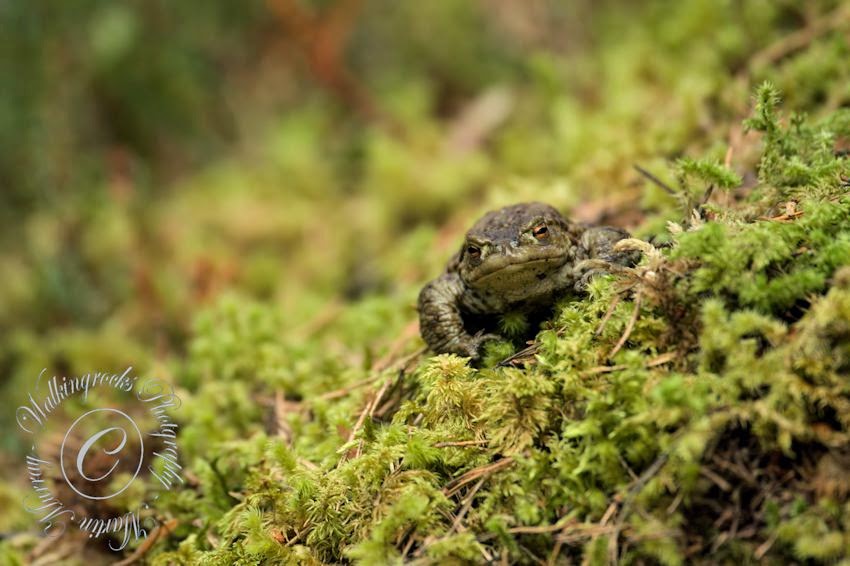The highlight of the day was the huge number of Common Toads congregating in the pool to spawn. More and more kept creeping out of the undergrowth to make their way down to the water, to join the hundreds already there. I had fun playing with different shots, and Lou was in seventh heaven, as toads have long been one of her favourite beasties.
 |
| Male Common Toad |
 |
| Reflection of a Male |
 |
| Female carrying Male to the pool |
We also found a very promising looking Badger sett, judging by the freshly dug earth around the entrances. We do know of several other setts in the area, but have yet to find one in as good a location for staking out, so I think I'll be back with a few peanuts in the very near future!
Finally, we stopped off so that Lou could have a look at the Water Voles, as she hadn't yet seen any this year. We got some great views of the male swimming along his stretch of stream and browsing on various reeds and stems only feet away from us. I experimented with trying a few different shots looking through the rushes, but can't quite make up my mind whether I like the results or not. No doubt I'll be back again soon for another go.
If only we'd found a mole, we'd have almost a full house of characters for the Wind in the Willows!























































